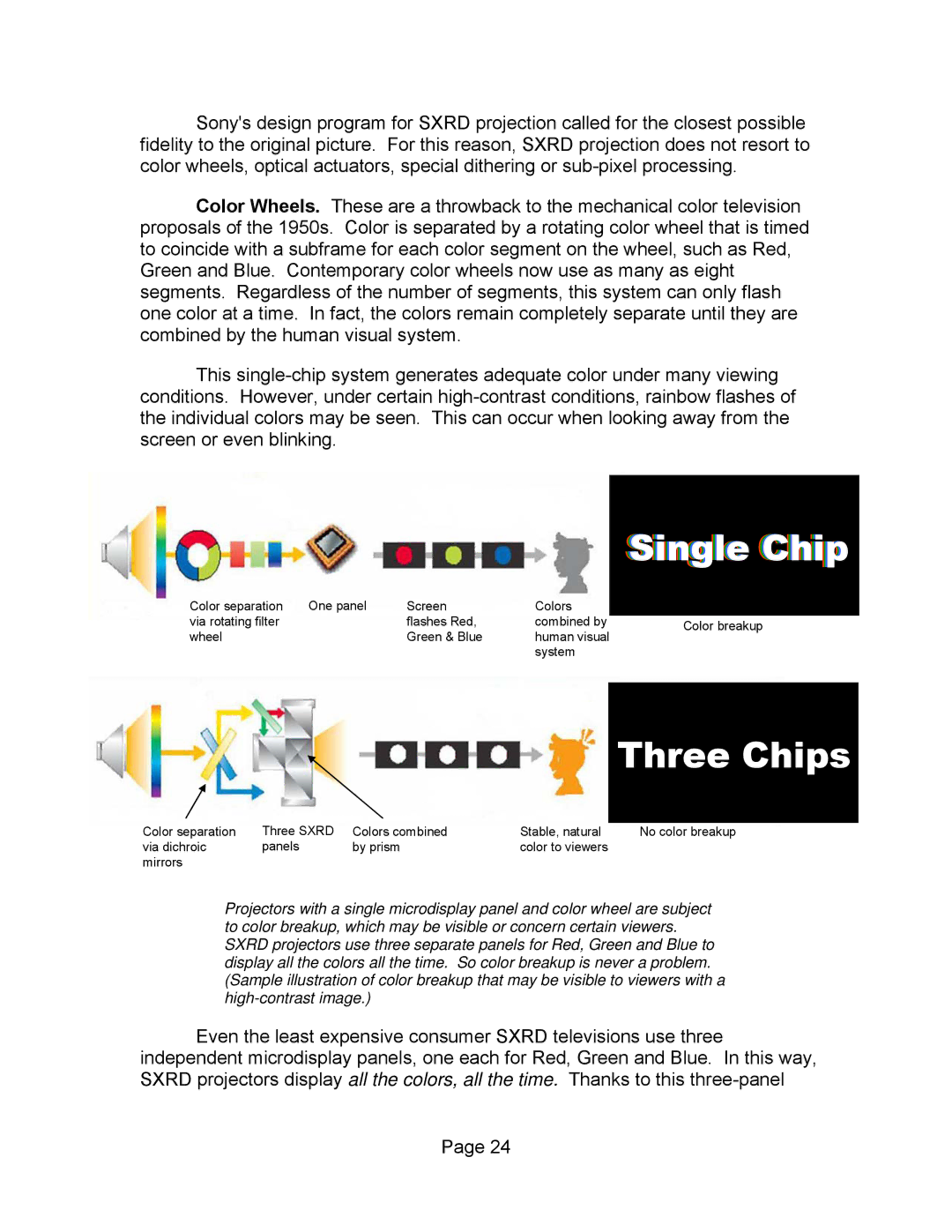
Sony's design program for SXRD projection called for the closest possible fidelity to the original picture. For this reason, SXRD projection does not resort to color wheels, optical actuators, special dithering or
Color Wheels. These are a throwback to the mechanical color television proposals of the 1950s. Color is separated by a rotating color wheel that is timed to coincide with a subframe for each color segment on the wheel, such as Red, Green and Blue. Contemporary color wheels now use as many as eight segments. Regardless of the number of segments, this system can only flash one color at a time. In fact, the colors remain completely separate until they are combined by the human visual system.
This
Single Chip
Color separation | One panel | Screen | Colors |
|
via rotating filter |
| flashes Red, | combined by | Color breakup |
wheel |
| Green & Blue | human visual | |
|
| |||
|
|
| system |
|
Three Chips
Color separation | Three SXRD | Colors combined | Stable, natural | No color breakup |
via dichroic | panels | by prism | color to viewers |
|
mirrors |
|
|
|
|
Projectors with a single microdisplay panel and color wheel are subject to color breakup, which may be visible or concern certain viewers. SXRD projectors use three separate panels for Red, Green and Blue to display all the colors all the time. So color breakup is never a problem. (Sample illustration of color breakup that may be visible to viewers with a
Even the least expensive consumer SXRD televisions use three independent microdisplay panels, one each for Red, Green and Blue. In this way, SXRD projectors display all the colors, all the time. Thanks to this
Page 24
